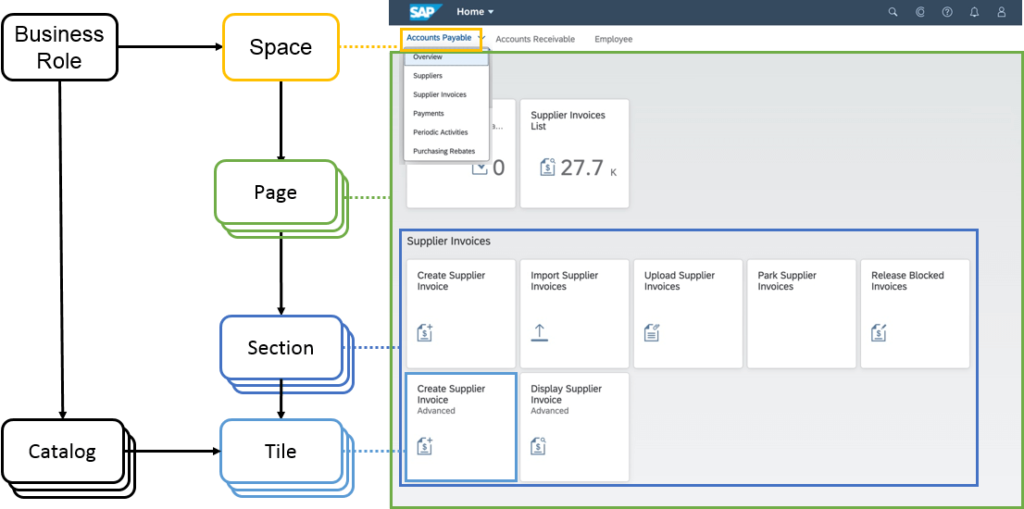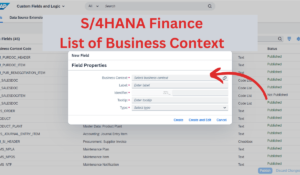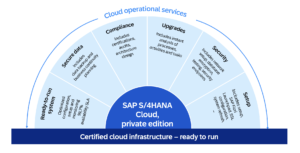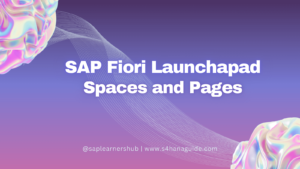In the dynamic world of enterprise software, the quest for more intuitive, streamlined, and user-centric platforms has never been more pronounced. SAP, a global powerhouse in software for business operations and customer relations, has been at the forefront of this evolution. The introduction of SAP Fiori as a design language marked a significant pivot towards more engaging and responsive user interfaces.
Table of Contents
At the heart of this innovation lies the SAP Fiori Launchpad Spaces and Pages, a paradigm shift designed to redefine how users interact with SAP S/4HANA system. This article dives deep into the essence, structure, and transformative potential of SAP Fiori Launchpad Spaces and Pages, unraveling why and how they represent a critical leap towards a more efficient, personalized, and user-friendly enterprise software experience.
Introduction to SAP Fiori
Before we delve into the intricacies of Spaces and Pages in SAP Fiori Launchpad, let’s briefly revisit what SAP Fiori stands for. Launched as a collection of apps in 2013, SAP Fiori was SAP’s answer to the growing demand for more accessible and less cumbersome enterprise software user interfaces. Built on the principles of simplicity, responsiveness, and role-based design, Fiori apps aim to deliver a seamless experience across devices and tasks, embodying what is often referred to as an “intelligent and intuitive” user experience.
SAP Fiori Launchpad: The Single-Point of Entry
The SAP Fiori Launchpad acts as the central access point to Fiori apps. It’s a platform that aggregates business applications into a single, customizable interface, allowing users to access the apps and information relevant to their specific roles and tasks. The SAP Fiori Launchpad is designed to work across all device types, offering a consistent user experience whether on desktop, tablet, or mobile.
The Evolution to Spaces and Pages
Defining Spaces and Pages
The evolution of the SAP Fiori Launchpad has led to the introduction of two pivotal concepts: Spaces and Pages. This architectural refinement is not just a rebranding but a rethinking of how users navigate and interact with SAP applications.

- Spaces are high-level containers that reflect different aspects of a user’s work or various roles they might inhabit. A Space could be dedicated to a particular business function, like procurement or sales, encompassing all the apps and information required for that domain.
- Pages exist within Spaces, serving as organizational layers that further segment the user’s tasks and applications. Each Page is a collection of Tiles (shortcut links to applications) further divided in to Sections. By structuring pages with meaningful sections, you gain control over the arrangement of apps on the page. For instance, you can prioritize the most frequently used apps in the top-level section and then organize related apps into separate sections.
The Rationale Behind the Shift
The shift towards Spaces and Pages is underpinned by several key objectives:
- Enhanced Personalization: By allowing users to tailor their work environments according to their roles, preferences, and tasks, SAP Fiori Launchpad aims to elevate productivity and user satisfaction.
- Improved Organization: The division into Spaces and Pages brings a new level of organization that helps users navigate more intuitively through the complex landscape of SAP applications.
- Greater Flexibility: This new approach offers users and administrators the flexibility to adapt the Launchpad to changing business processes and personal workstyles.
- Simplified Access: With the complexity of SAP’s ecosystem, simplifying access to frequently used apps and information is paramount. Spaces and Pages facilitate this by making critical functionalities more readily accessible.
Technical Breakdown
To fully appreciate the capabilities of SAP Fiori Launchpad Spaces and Pages, a closer look at their technical composition and how they fit into the SAP architecture is crucial.
Building Spaces and Pages
- Design Considerations: Creating Spaces and Pages is a task that requires thoughtful consideration of the end-user’s needs and workflows. SAP provides tools and guidelines for administrators and developers to design these with an emphasis on usability and efficiency.
- Technical Implementation: Spaces and Pages are developed using SAP’s UI5 framework, ensuring consistency and responsiveness across devices. The integration with the SAP Cloud Platform enables a cloud-native experience, allowing for scalability and security.
Prerequisites
- Catalogs defined: Ensure required technical or business catalogs are set up.
- Role administrator permissions: Have security admin rights (PFCG) to add spaces to roles.
- Business catalog and apps: Verify you have access to
SAP_BASIS_BC_UI_FLDcatalog with the following apps:- Manage Launchpad Spaces: Create/manage spaces and assign pages.
- Manage Launchpad Pages: Create/edit page content.
- Create Launchpad Pages from Groups: Create pages based on existing groups.
- Authorization role: Ensure you have
SAP_FLP_ADMINrole assigned. - ODATA services activated: Activate below specific OData services using either with the task list SAP_FIORI_FOUNDATION_S4 or manually:
FDM_SPACE_REPOSITORY_CUST_SRV: Manage Launchpad Spaces app access.FDM_PAGE_REPOSITORY_CUST_SRV: Manage Launchpad Pages app access.FDM_PAGE_RUNTIME_SRV: Users can view spaces and pages in launchpad.FDM_TRANSPORT_SRV: Handle space and page transport.
- Launchpad configuration: Enable spaces in launchpad settings using parameters SPACES and SPACES_ENABLE_USER.
High Level Steps
- Create a space:
- Use Manage Launchpad Spaces app.
- Define space details and assign it to a role.
- Create a page:
- Use Manage Launchpad Pages app.
- Define page content (sections, tiles, etc.).
- Optionally create pages from existing groups.
- Assign page to space:
- In Manage Launchpad Spaces app, define page assignment for the created space.
- (Optional) Translation:
- Use standard SAP translation tools for space/page localization.
- Analysis:
- Use
/UI2/RSP_LISTtransaction to analyze space/page assignments to roles.
- Use
User Experience Enhancements
The technical enhancements introduced with Spaces and Pages significantly impact the user experience. Faster load times, more relevant information at a glance, and a decluttered interface contribute to a more pleasant and productive work environment.
Adoption and Best Practices
Embracing Change
The transition to using Spaces and Pages requires a cultural shift within organizations. It involves rethinking how information and applications are presented to users and necessitates training and support to maximize adoption.
Guide to Implementation
For organizations looking to leverage SAP Fiori Launchpad Spaces and Pages, a phased approach to implementation is advisable. Starting with a pilot project and gradually expanding the scope allows for iterative learning and adjustment.
The Road Ahead
As SAP continues to innovate, the future of Fiori Launchpad Spaces and Pages looks promising. With a commitment to user-centric design and continuous improvement, SAP Fiori is set to remain at the forefront of enterprise software interfaces.
Conclusion
The introduction of Spaces and Pages in SAP Fiori Launchpad represents a significant step forward in the evolution of enterprise software user experiences. By offering enhanced personalization, improved organization, greater flexibility, and simplified access, SAP Fiori addresses the critical needs of today’s business users. As organizations around the world adopt and adapt to these new features, the potential for more efficient, engaging, and intuitive work environments becomes increasingly apparent.
We hope, this article provides a foundational understanding of Spaces and Pages in SAP Fiori Launchpad.






